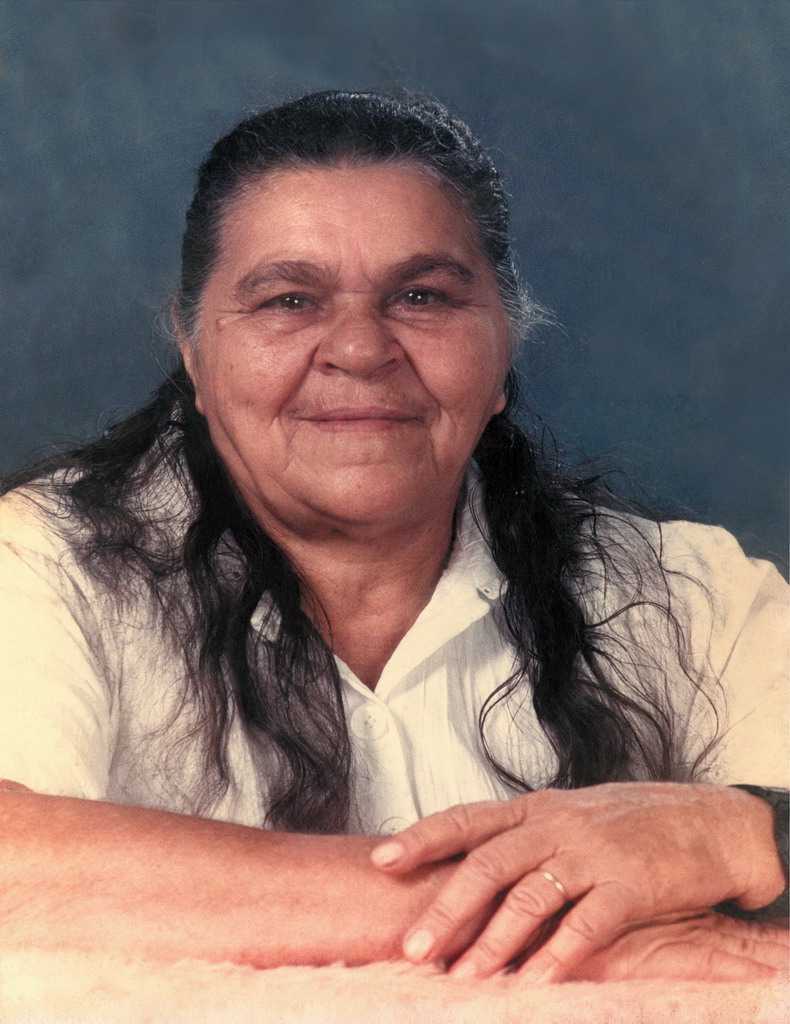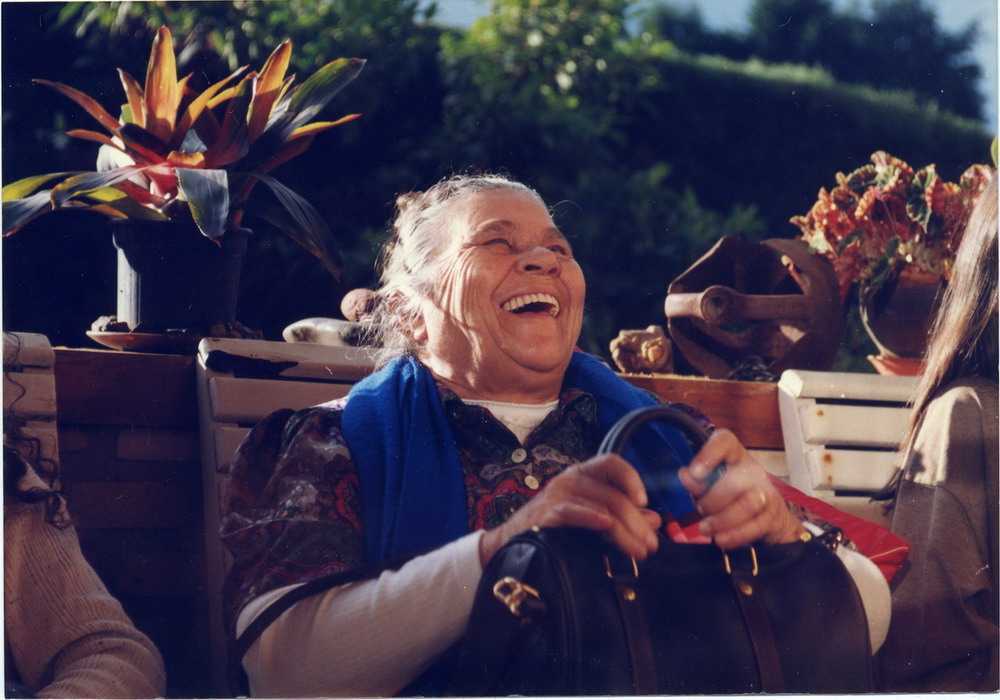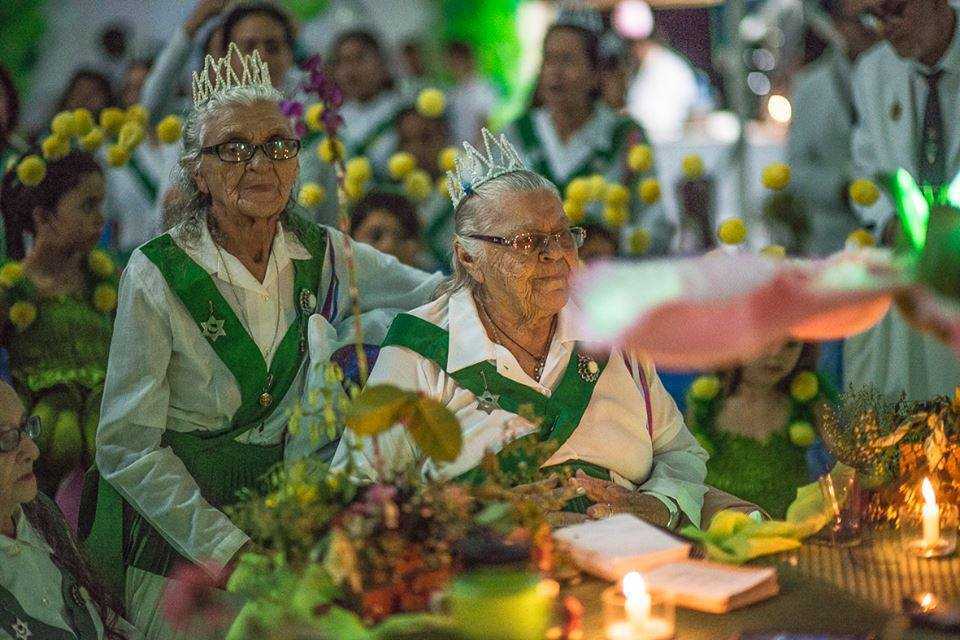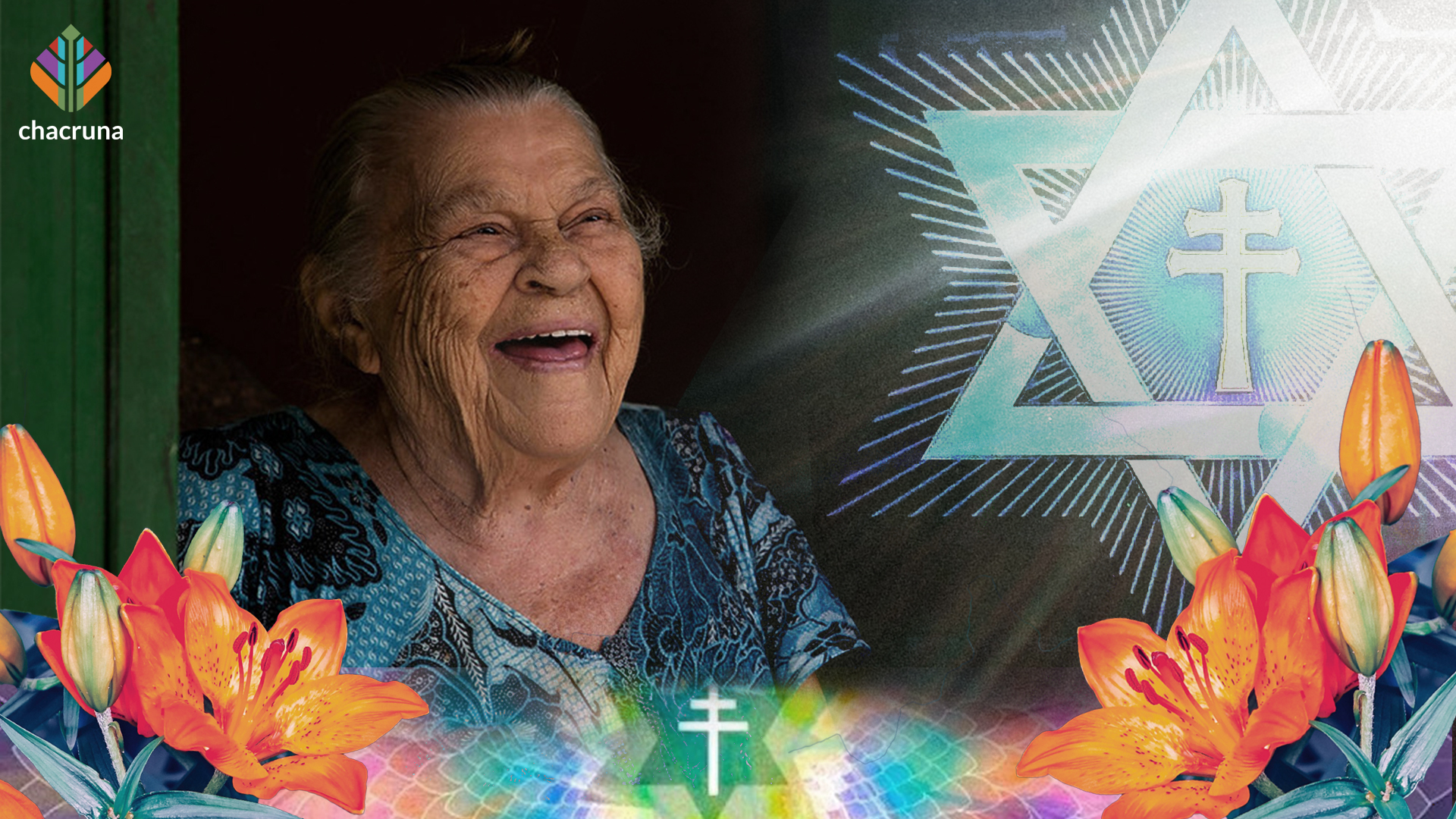- Introduction to Women and Psychedelics - July 26, 2024
- Eight Frequently Asked Questions About Ayahuasca Globalization - February 13, 2024
- Ten Tips for Standing in Solidarity with Indigenous People and Plant Medicines - January 18, 2024
Talking about religions from a decolonial perspective and being academically rigorous while supporting social justice necessarily involves telling the story of these women and making their roles visible.
The history of religions is often told as a story of great men; but, it has also been built through the struggle, sweat, suffering and achievements of many women, who, despite their merits, talents, and the incredible stories of their lives, have frequently been silenced and made invisible, including by academic scholars. Talking about religions from a decolonial perspective and being academically rigorous while supporting social justice necessarily involves telling the story of these women and making their roles visible. And this is equally true for the study and understanding of the social evolution of the use of psychedelic plants.
If we want to talk about religions that use plant medicine, then it is essential to highlight women as the protagonists they are. It is with this objective that this article describes the story of a woman who has made a great difference in the religious use of ayahuasca in Brazil and in the expansion of its consumption outside the Santo Daime religion: Madrinha (Godmother) Rita Gregório.
From the Drought in The Northeast to The Society of Rubber Tappers: A Rubber Soldier
Rita Gregório de Melo was born on June 25, 1925, in the rural area of the state of Rio Grande do Norte, in the Northeast of Brazil. As with the vast majority of Northeasterners at that time, her family had no land of their own, and no livestock, nor property.
Rita and her parents worked as humble fishermen and fisherwomen and subsistence farmers, cultivating crops like beans, corn, watermelons, and carnauba (Copernicia serifera) wax. And so they remained until the early 1940s. Before this time, the Brazilian Amazon had been a major producer of rubber, but this economy collapsed due to the illegal smuggling of rubber seeds from the Amazon rainforest in the late nineteenth century to establish plantations in British colonies, especially Malaysia. These plantations eventually reduced Brazil’s share of the rubber market from a virtual monopoly to only 20 percent by 1918.
With the onset of World War II, however, everything changed. The need for rubber increased dramatically during WWII, and rubber production in Brazil became strategic because of the need to supply the allied troops. For this reason, thousands of people from the Northeast were recruited to go to the Amazon with the promise of better living conditions. This movement became known as the “Battle for Rubber,” and the migrants who participated in this process were called “Rubber Soldiers” (Brooke, 1991)
In 1944, Madrinha Rita and her family became part of this group, and they went to the Amazon, reaching the wilds of the Juruá Valley, where they settled on a rubber plantation. There, Rita met Sebastião Mota de Melo, later known as Padrinho (Godfather) Sebastião, who was largely responsible for the international expansion of Santo Daime. She married in him the 1940s and gave birth to 11 children (Mortimer, 2019). Two of their children, Alfredo and Valdete, are now among the most important worldwide figures in Daime. During the period she lived in the rubber plantations, Madrinha Rita took care of the domestic work; in addition to the upbringing of her children, she was responsible for raising domestic animals, preparing food, and sewing clothes.
Join us for our next conference!
Just as in the large urban centers today, in the twenty-first century, it is absolutely impossible to think about raising families on the plantations and maintaining the productive activity of the rubber economy without the decisive role of women in unpaid domestic work and in sustaining the entire economy. As Sebastião needed to go hunting and fishing in excursions that could last several days, Rita would take care of all the domestic activity and care for the children by herself. And all this without appliances, basic sanitation, government services, electricity, or security against potential invaders. Her circumstances are difficult to imagine compared to the Western standards of today’s consumer society.
Due to the difficulty of life on the rubber plantations, in 1957, Rita and Sebastião moved with their family to Rio Branco, the capital of the state of Acre. This was an arduous journey that took many weeks, with precarious transport and involving long hikes lasting several days, in which they carried their children under a scorching sun (Mortimer, 2019).
The Encounter with Mestre Irineu and the Expansion of Santo Daime
In Rio Branco, Rita and Sebastião started to live in the so-called “Colônia Cinco Mil” (Five Thousand Colony) that, in the future, would become a hub for the Brazilian expansion of Santo Daime, where they dedicated themselves to farming and raising animals. In 1965, Rita had the opportunity to personally meet Raimundo Irineu Serra, a Black man from Maranhão, grandson of slaves and the founder of Santo Daime. Sebastião received a healing in a ritual led by Mestre (Master) Irineu that motivated Rita to discover ayahuasca through Santo Daime.
Having been brought up in an environment hostile to women’s freedom, in the midst of an impoverished family and evangelical religiosity, Rita was shy and was hesitant to approach Mestre Irineu, who was always surrounded by people (Mendonça Pinto, 2021). In order to get closer to Mestre Irineu, it was necessary for Rita to overcome this shyness (a challenge she repeatedly met in order to be recognized as the great leader she is). And this was how Rita met Mestre Irineu. The encounter transformed her life and defined the course of her existence, community, and spiritual work.
From then on, Rita, together with her husband, joined the Santo Daime religion and became a leader in the spiritual services performed at Colônia Cinco Mil. Here, they received many people in search of healing and inspiration, including pregnant women looking for help in the delivery of their children, a tradition that has been developed and improved by her and her companions ever since.
After Mestre Irineu’s death, Rita and Sebastião took on an important role in the continuity of Irineu’s work, and an increasing number of people began to gather around her and her work.
After Mestre Irineu’s death, Rita and Sebastião took on an important role in the continuity of Irineu’s work, and an increasing number of people began to gather around her and her work. From this point on, they became known as “Madrinha” (Godmother) Rita and “Padrinho” (Godfather) Sebastião, an affectionate form of recognition for the dedication they gave to the people who sought them out.

A Woman Ahead of Her Time
Right from the beginning, the way that Rita and Sebastião developed their religious experience was marked by their openness to diversity. They welcomed people from different socioeconomic and cultural backgrounds, and they also experimented with psychedelics and incorporated new practices and symbols into their ritual experience. This curiosity was always a characteristic of the couple, who were certainly ahead of their time during a period when Brazil was still living in the shadow of the military dictatorship.
She has always been very sincere in her demonstration of empathy and love for the rebel, for those who displease, and she has been altruistic in dedicating a large part of her time to the “black sheep” of the community and society.
Another hallmark of both was the community experience. This included the production and distribution of food, with the aim of constructing spaces for coexistence and promoting forms of solidarity outside the exploitative economic system of the time. As her followers say, Madrinha Rita has always received and embraced the underprivileged. She has always been very sincere in her demonstration of empathy and love for the rebel, for those who displease, and she has been altruistic in dedicating a large part of her time to the “black sheep” of the community and society.
Another characteristic feature is her unwavering confidence in the causes she embraces and in the spiritual work of expanding Santo Daime.
No less interesting was her allowing use of Santa Maria, that is, cannabis, in the religious ceremonies of Santo Daime, and she has been one of the main developers and custodians of the ritualistic character of its use for several decades.
She radiated calm and tranquility, blessing the expansion of Santo Daime in the large Brazilian cities in a historical period where the social stigma attached to the consumption of psychedelics was much greater than it is today, and there was limited legal support for the use of ayahuasca. No less interesting was her allowing use of Santa Maria, that is, cannabis, in the religious ceremonies of Santo Daime, and she has been one of the main developers and custodians of the ritualistic character of its use for several decades.
In the early 1980s, Madrinha Rita abandoned the entire structure that she had struggled to assemble in Rio Branco in order to accompany Sebastião in building a community project in the heart of the Amazon Rainforest. This is where Céu do Mapiá was born, a Daime community located in the Purus National Forest, several hours by boat away from the nearest town. With some 1000 residents, it is today the largest Daime group in the world, considered a kind of Mecca by its followers. In this decade, together with Sebastião and their children, Rita took on the role of world ambassador for Santo Daime, traveling to different locations to educate people about the Daime culture and liturgy and welcome new followers, called afilhados (godchildren).
In 1990, Padrinho Sebastião died, and from then on, it was Rita’s task to faithfully follow the Santo Daime doctrine and give support to the entire Daime community and its thousands of adherents around the world. Although her children, Alfredo and Valdete, have now become international leaders (Alfredo is President of the Higher Doctrine Council of ICEFLU – Church of the Eclectic Cult of the Universal Fluent Light, and Valdete is the General Administrator), both devote great obedience and pay deference to Madrinha Rita as matriarch of the doctrine.
Discover the Indigenous Reciprocity Initiative of the Americas
Her role in social cohesion and the resolution of social, family, and political conflicts in Céu do Mapiá, for example, is of great importance. And it is there, amid the pure air of the forest and the mosquitoes that cause malaria (a disease that has affected Rita dozens of times), Rita lives and continues, at almost 97 years-old, to take care of her godchildren.
As she is now very old, Madrinha Rita no longer goes to church or visits people’s homes. As she cannot physically reach the church and the community, the church and the community come to her (Mendonça Pinto, 2021). So, today, the balcony of her house is one of the busiest and most representative spaces of the entire Daime experience in Céu do Mapiá. It is there that Madrinha Rita faithfully performs her daily prayers and distributes blessings to the brotherhood and all visitors. Children are also a constant presence in this environment, which currently also hosts several Santo Daime works (spiritual ceremonies. The presence of Madrinha Rita is also considered something special by the devotees, and this makes the mystical and collective experience deeper and stronger.
Madrinha Rita is never alone but always accompanied by her female companions, which reveals a relationship of sisterhood and a female support network that surrounds her. While these women support Madrinha Rita in her daily needs in terms of health, mobility, company, and work, they are also supported by her in their own personal needs and have themselves become central figures in Santo Daime religious life.

Another historic element is the recognition of the attention, dedication, and affection given by Madrinha Rita to the women who are part of Santo Daime, and her sadness at the injustices that sometimes permeate the relationship between men and women within the religion.
Since the 1980s Madrinha Rita has organized religious ceremonies exclusively for women: “women’s works.” Historical records even show Madrinha Rita’s attempt to institute women-only spiritual meetings every 15 days or monthly (Mendonça Pinto, 2021). Another historic element is the recognition of the attention, dedication, and affection given by Madrinha Rita to the women who are part of Santo Daime, and her sadness at the injustices that sometimes permeate the relationship between men and women within the religion. It was to a woman—Regina Pereira—that Madrinha Rita gave the house where she had lived with Padrinho Sebastião when she changed residences in Mapiá.
A very important historic event for all of Santo Daime, especially due to the macho and homophobic attitude of many followers of the religion, was the personal authorization that Madrinha Rita gave to a lesbian couple who were able to marry in the Daime ritual
Other striking traits of Madrinha Rita that reveal how she has been ahead of her time are the absence of envy in her relationship with Padrinho Sebastião and her family and her encouragement for her followers to live their lives freely and fully. As Dona Bina, another Santo Daime elder and important chronicler of the religion, says: “Invited by an Argentine group to a ritual with San Pedro (Echinopsis pachanoi), I went to consult the godmother. She answered me: ‘Go and discover what you don’t know. What are you afraid of?’” (Mendonça Pinto, 2021). A very important historic event for all of Santo Daime, especially due to the macho and homophobic attitude of many followers of the religion, was the personal authorization that Madrinha Rita gave to a lesbian couple who were able to marry in the Daime ritual (Platero & Platero, 2020)

An Example of Female Power and Agency in the Universe of Santo Daime and Ayahuasca
Madrinha Rita has “received” her own hinario (hymnal), that is, a group of religious songs believed to be spiritually conferred on one within the scope of Santo Daime. Compiled in an hinario called “Lua Branca,” (White Moon), her hymns are considered teachings of healing, love, calm, peace, and unity by Daime followers around the world, and have already been translated into English, Dutch, Spanish, Italian, and Japanese. According to Daime mythology, it was a universal goddess, the Queen of the Forest, who delivered the Santo Daime teachings and revealed the mysteries of ayahuasca to Mestre Irineu. More than a mythology that includes women, it is a mythology where female agency and protagonism are decisive and fundamental.
It is very important, therefore, that women’s lives in Santo Daime are made visible, and that Daime women are able to tell their stories. Madrinha Rita’s life is a marvelous example of the importance of women in Santo Daime social life, of the intimate and beautiful relationship between a plant that teaches and female agency in the ayahuasca universe, and of the power that exists in sharing these stories. May more and more women raise their voices to share their own stories, just as Madrinha Rita raised hers and sang in her hinario:
I will tell my story
Since it started
Santo Daime is my life
My path, my teacher
I will now say
What He taught me

Art by Trey Brasher.
References
Brooke, J. A. (1991, May 15). Manaus journal; For the rubber soldiers of Brazil, rubber checks. New York Times. https://www.nytimes.com/1991/05/15/world/manaus-journal-for-the-rubber-soldiers-of-brazil-rubber-checks.html
ICEFLU. (n.d.). Madrinha Rita. Santo Daime ICEFLU. http://www.santodaime.org/
Mendonça Pinto, A. L. A. (2021). Costurando os retalhos: Crônicas do Céu do Mapiá [Sewing the patchwork: Chronicles of Céu do Mapiá]. Editora Reviver.
Mortimer, L. (2019). Bença, Padrinho! [Blessings, Padrinho!]. Editora Reviver.
Platero, L. & Platero, K. (2020). Uma experiência de casamento homossexual no Santo Daime [An experience of homosexual marriage in Santo Daime]. Chacruna Latinoamérica. https://chacruna-la.org/uma-experiencia-de-casamento-homossexual-no-santo-daime/
Take a minute to browse our stock:
Did you enjoy reading this article?
Please support Chacruna's work by donating to us. We are an independent organization and we offer free education and advocacy for psychedelic plant medicines. We are a team of dedicated volunteers!
Can you help Chacruna advance cultural understanding around these substances?
















